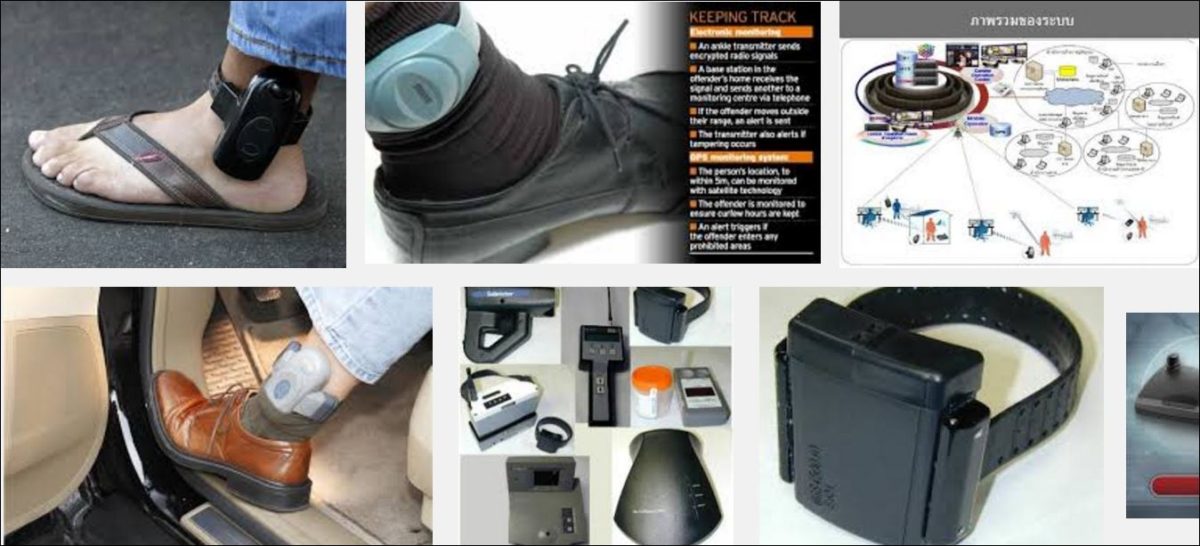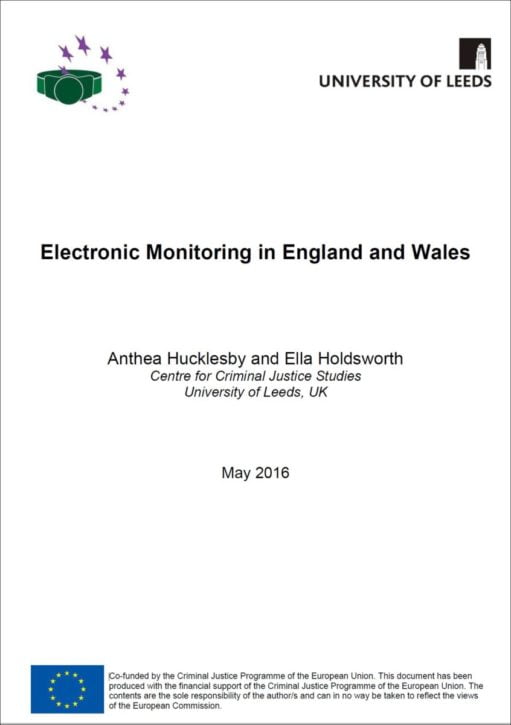The rise and rise of electronic monitoring
Electronic monitoring is an accepted and important component within the criminal justice system but its use is insufficiently regulated allowing it be applied unfairly.
That’s the conclusion of Anthea Hucklesby and Ella Holdsworth, the authors of a new (May 2016) study entitled: Electronic monitoring in England and Wales.
Background
England and Wales was the first European jurisdiction to deploy electronic monitoring (EM) technology in 1989 and its use has since grown both in terms of numbers and modalities. England and Wales remains one of the largest and most enthusiastic users of EM in the world.
Currently, EM is used mostly to enforce curfew requirements and is deployed as a condition of bail, a requirement of community and suspended sentence orders and as a form of early release under the Home Detention Curfew scheme. The use of GPS technologies are limited to a few high-risk cases and voluntary schemes run by the police. There are also current pilots of alcohol monitoring and bi-lateral victims monitoring.
The research
The research formed part of a broader European Commission funded project which was the first empirical comparative study of EM to be conducted. The aim of the project was to compare law, policy and practices in five European jurisdictions focusing particularly on EM’s capacity to act as an alternative to custody and to identify best practices to enhance its effectiveness and ensure that EM is used legally, creatively, ethically and humanely. The research undertaken in England and Wales included an extensive literature review alongside 18 days of observations and 68 interviews with policy-makers, practitioners and managers and operational staff from the EM contractor. [You can see Hannah Graham’s research on Scotland’s very different approach to EM here.]
Main findings
The report’s main findings were:
- Electronic monitoring has become a credible tool of criminal justice.
- EM has universal appeal with many purposes identified. Chief amongst these was its perceived ability to bring about cost savings by operating as an alternative to prison.
- The recent development of EM has been hampered by problems with the procurement process (readers will remember the overcharging scandal which resulted in G4S and SERCO withdrawing from the Transforming Rehabilitation bidding process).
- Radio frequency and GPS technologies have complimentary and distinct uses.
- The use of EM is highly structured, uniform and routinized, reducing the potential for its creative application to enhance its effectiveness.
- Private sector involvement in EM is accepted.
- EM remains largely disconnected from the wider criminal justice system.
- Policies and practices to ensure that EM is applied and used fairly with diverse populations are ineffective.
- Only limited data relating to EM are available restricting knowledge and understanding of EM.
Conclusions
These findings are very timely given the recent, persistent interest in expanding EM in England and Wales, primarily as a way of reducing the prison population and, consequently, the costs of the criminal justice system. The researchers also found that police services and Police and Crime Commissioners (PCCs) were enthusiastic about EM and wanted to exploit it further for policing purposes.
There appears to be an urgent need for there to be much more transparency about the way in which EM is used in this country. While prisons and probation services are inspected regularly, very little attention appears to have been paid to EM.
The report’s authors make a series of very prescriptive recommendations which are relatively rare in this sort of research (but to be commended for their directness).
They recommend:
- changing the eligibility criteria for HDC to remove the automatic exclusion of prisoners with a history of recall;
- changing the way in which HDC decisions are presented as the individual responsibility of prison governors;
- the legal regulation of GPS technologies for criminal justice purposes to ensure appropriate and proportionate use;
- ways to better tailor the use of curfews to the circumstances of individuals and cases to maximise compliance and completion;
- implementing mechanisms to incentivise compliance including structured phased reductions in curfew hours and ending orders earlier than planned;
- introducing new technologies and ways of working to improve the efficiency and effectiveness of EM such as ‘plug and play’ and biometric identification;
- ways to provide general support and advice unrelated to EM to monitored individuals;
- introducing consistent breach thresholds across EM modalities;
- developing mechanisms to improve awareness and appropriate use of EM amongst criminal justice practitioners;
- implementing mechanisms to improve joint working and lines of communication between the contractor and criminal justice agencies;
- introducing measures to ensure fair and consistent treatment of individuals from diverse communities; and
- reviewing contract requirements to ensure their workability, manageability and effectiveness for criminal justice agencies and the EM contractors.





